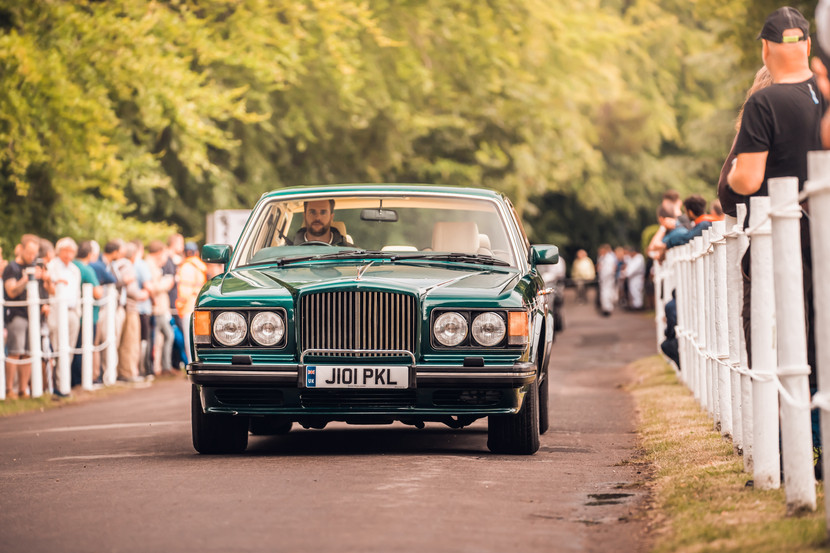Bentley celebrated four decades of handcrafting turbocharged grand tourers with a ten-car parade at the Goodwood Festival of Speed. In the forty years since the first turbocharged Bentley, the immense reserves of power and effortless torque that characterise Bentley engines have become inseparably associated with turbocharging.
Bentley Motors displayed seven turbocharged Bentley models from its Heritage Collection at the Goodwood Festival of Speed, alongside key models from the current range.
Today the advantages of turbocharging have seen its universal adoption from city cars to supercars. But it was a bold step in 1982 for Bentley to adopt the technology and one that paid off handsomely. In the words of automotive historian Eric Dymock, it was a decision that ‘recaptured Bentley’s soul’. That soul can be experienced today in Bentleys W12, 4.0 V8 and V6 models; the tidal wave of torque that is integral to Bentley’s appeal owes much to the turbocharger.
With a top speed of over 150 mph the Continental R, launched at Geneva in 1991, was a true high-performance grand tourer, and the first Bentley with its own unique body since the R Type Continental of 1952. Its turbocharged 6.75-litre V8 developed 355bhp; 0-62mph took just 6.6 seconds.
When the Arnage was first launched in 1998, it was powered by a 4.4-litre BMW V8. Impassioned pleas from Bentley owners around the world and the personal intervention of VW Group Chairman Ferdinand Piëch persuaded management to reconsider, and shortly after the company became part of the VW Group, Bentley announced a new ‘Red Label’ Arnage with the beloved Jack Phillips-derived 6.75-litre V8 back under the bonnet. In this form it It also developed 405 PS (400 bhp) and 835 Nm, restoring the effortless ‘wave of torque’ character to the Arnage. The 0-62 mph benchmark took just 6.3 seconds with a governed top speed of 155 mph.
The enduring appeal of the Bentley 6.75-litre V8, and continuing demand for hand-built craftsmanship at the highest level, inspired Bentley to offer a limited-edition coupé based upon the Arnage platform. Further revisions to the twin-turbocharged 6.75-litre V8 raised the power output to 535 PS (530 bhp) with 1,050 Nm of torque. Top speed was 183 mph (296 km/h) and the 0-62 mph sprint took 5.3 seconds.
The Mulsanne
By the time of the new Mulsanne in 2010, every component of the engine had evolved and the 6¾-litre V8 only shared its key internal dimensions and layout with its forebears. Variable valve timing and cylinder deactivation ensured that it was up to 99% cleaner and far more fuel-efficient than a 1950s Bentley V8.
2003: The W12 Era Begins
The Continental GT, launched in 2003, was the first all-new Bentley since the original 3.0-litre of 1919, with no components carried over from a previous generation. The new Bentley featured a 6.0-litre twin-turbocharged 48-valve W12 engine; in essence two narrow V6 engines on a common crankshaft. This design had multiple advantages; it was compact, it was immensely smooth, and it gave the new Bentley a power output of 560 PS (552 bhp) and 650 Nm of torque.
A More Efficient Bentley V8
The first new Bentley V8 engine in over 50 years made its debut in 2012 as the Continental GT V8. Its 4.0-litre V8 featured cylinder deactivation technology, ‘hot side inside’ turbo mounting, power recuperation, and engine management. With a new eight-speed automatic transmission, the new V8 delivered a forty percent improvement in fuel efficiency compared with the 6.0-litre W12, while producing 500 bhp and 660 Nm of torque
Adding Further Emotion - Continental GT S
At this year’s Festival of Speed, Bentley’s new S range of models made their global debut – the Continental GT S, the Continental GTC S and the Flying Spur S. All are powered by the latest 4.0-litre V8.












